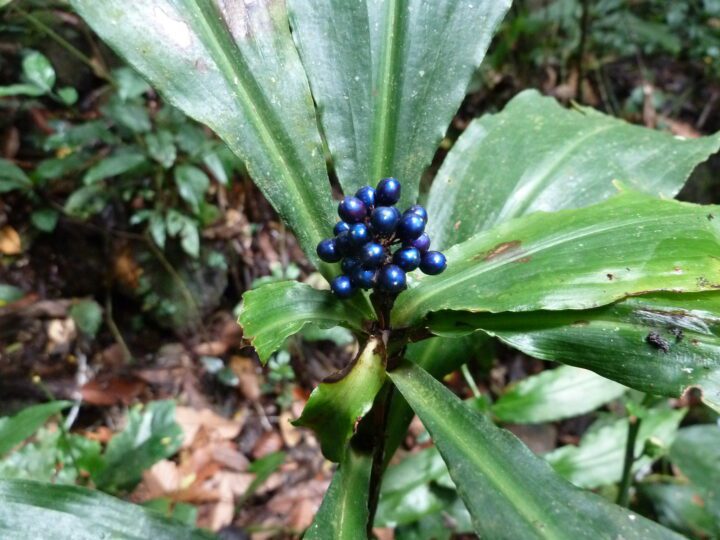Sparxell creates colors and effects with vibrant, shimmery pigments made from cellulose.
Benefits
- Biodegradable
- Uses renewable resources
- Vibrant, non-fading color
- No microplastics
- No mined minerals
Applications
- Cosmetics and personal care products
- Paints
- Packaging
- Food and beverages
- Textiles
- Arts and crafts
UN Sustainable Development Goals Addressed
-

Goal 6: Clean Water & Sanitation
-

Goal 12: Responsible Production & Consumption
The Challenge
Traditionally, cosmetics, paints, packaging, textiles, and other products get their luster from special effect pigments or glitters. But the mining of mica that’s often used to make effect pigments has been linked human rights abuses, and glitter is actually metal-coated plastic that often ends up degrading in and polluting oceans, rivers, and soil.
Biological Model
Most colors in nature come from s, whose unique molecular compositions determine which wavelengths of light an object will absorb. But the vivid, iridescent colors of peacock feathers, blue morpho butterfly wings, and scarab beetles’ bodies, for example, come from structural color instead. Structural color is created when light interacts with physical micro- or nano-size structures on an object’s surface, causing lightwaves to scatter and interfere with each other. One of the most intense colors found anywhere in nature is the brilliant blue of the Pollia condensata berry. Its color comes from layers of chains in the cell walls arranged in unique helix-type structures. This unique arrangement inspired the team at Sparxell.
Innovation Details
Sparxell creates environmentally and socially friendly colorants for everything from cosmetics to packaging to food. They’re made from cellulose, so they’re biodegradable, and they use structural color, so they never fade.
Starting with a solution of cellulose nanocrystals—which can be derived from wood pulp—a reflective, colored film forms as the liquid evaporates and the crystals arrange themselves into helix-type structures similar to those in the cell walls of the Pollia condensata berry. Using patented technology, Sparxell can tailor the color and shimmer of the film by controlling exactly how those crystals interact with each other. Ground into fine powders, the films can take the place of traditional metallic and pearlescent pigments. Cut or ground into bigger particles, they can fill the role of traditional glitter or sequins, or even film layers. Sparxell’s patented production process allows these colorants to be produced at a large-scale, commercially viable level.

The Human Factor
As a Ph.D. candidate, Sparxell founder and CEO Benjamin Droguet worked in the lab of Cambridge professor Silvia Vignolini, whose research unlocked the secret behind one of the most intense blues found in nature—that of the Pollia condensata berry. His research focused on how those colors could be reproduced industrially, using only cellulose. He became fascinated with structural color, always looking for it in living organisms out in nature and on visits to natural history museums. Acknowledging the social and environmental impacts of today’s mass-produced colorants, he founded Spraxell with the purpose of creating the next generation of colors.
Ray of Hope Accelerator
The Ray of Hope Accelerator supports an annual cohort of ten high-impact nature-inspired startups representing various sectors and regions addressing the world’s biggest environmental and sustainability challenges. The accelerator builds upon years of experience as the Ray of Hope Prize. Created in honor of Ray C. Anderson, founder of Interface, Inc. and a business and sustainability leader, the $100,000 Ray of Hope Prize (2020-2023) shone a light on the innovative, nature-inspired solutions that we need to build a sustainable and resilient world. Sparxell was selected as a finalist for the 2023 Ray of Hope Prize.


